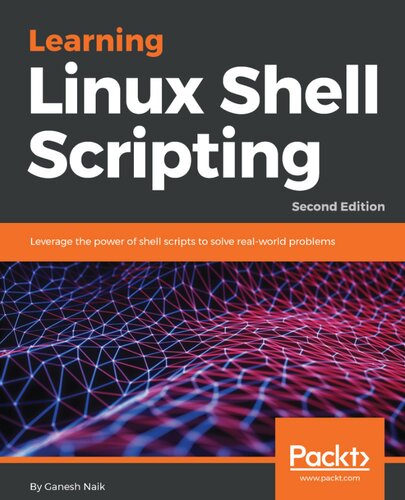

Most ebook files are in PDF format, so you can easily read them using various software such as Foxit Reader or directly on the Google Chrome browser.
Some ebook files are released by publishers in other formats such as .awz, .mobi, .epub, .fb2, etc. You may need to install specific software to read these formats on mobile/PC, such as Calibre.
Please read the tutorial at this link. https://ebooknice.com/page/post?id=faq
We offer FREE conversion to the popular formats you request; however, this may take some time. Therefore, right after payment, please email us, and we will try to provide the service as quickly as possible.
For some exceptional file formats or broken links (if any), please refrain from opening any disputes. Instead, email us first, and we will try to assist within a maximum of 6 hours.
EbookNice Team

Status:
Available0.0
0 reviews
ISBN 10: 1788993195
ISBN 13: 9781788993197
Author: Ganesh Naik
Learn to impeccably build shell scripts and develop advanced applications
Create smart solutions by writing and debugging scripts
A step-by-step tutorial to automate routine tasks by developing scripts
learn linux scripting online
facebook linux interview questions
linux shell script tutorial for beginners
learning shell scripting with zsh pdf
ebook shell script linux
Tags: Ganesh Naik, Linux, Shell